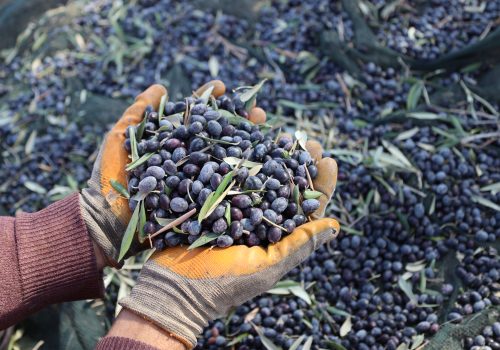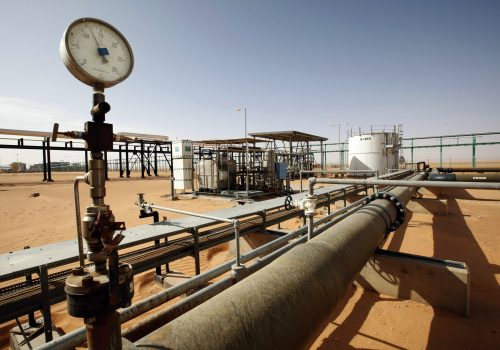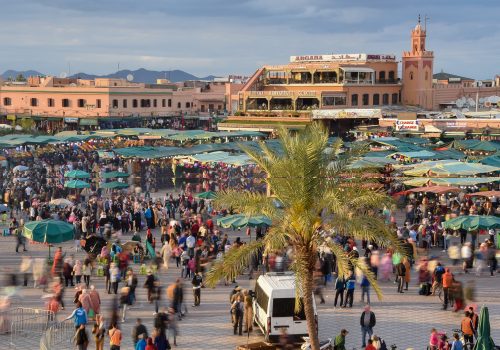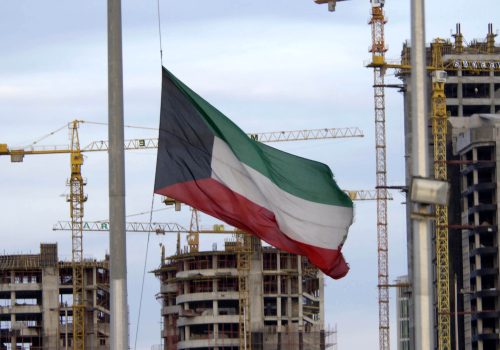Introduction
Climate change has exacerbated deadly floods worldwide and the Middle East and North Africa (MENA) region is no different. The devastating floods that struck eastern Libya last week have claimed a minimum of 5,300 lives up to date.
Storm Daniel caused the floods as it moved southward into Libya. The storm has earned the label of ‘the deadliest storm’ on a global scale, surpassing even Super Typhoon Haiyan in 2013, which claimed the lives of 7,354 people in the Philippines. The casualties resulting from Daniel have also exceeded those of the 1927 floods in Algeria, where 3,000 people lost their lives. These statistics are based on data from the international disaster database (EM-DAT), which also identifies Daniel as the deadliest storm in Africa since 1900.
The most severe flooding event caused by Storm Daniel occurred in the port city of Derna, with a population of over 90,000. This was primarily due to the Derna and Abu Mansur dams deteriorating condition—both approximately half a century old. As a result, a massive surge of water flooded through the town along the Wadi Derna, carving a path about 320 feet wide. This deluge inundated certain structures and led to the collapse of others.
The Libya floods have been a wake-up call for the dangers of climate change in the country and the wider MENA region. Similar to the broader North African region, Libya is currently witnessing rising sea levels, shoreline erosion, floods, elevated temperatures, and escalating drought conditions.
Amid Libya’s rapidly changing political landscape, which garners significant domestic and international focus, there are also pressing climate change-related risks that require policymakers’ attention. Specifically, three risks stand out as potentially existential threats to the nation: (1) the economic repercussions of reaching peak oil, (2) the looming threat of depleting freshwater sources, and (3) the reaching of an alarming level of food insecurity.
Increasing temperatures
Libya is situated in the southern Mediterranean, an area highly susceptible to climate change impacts due to the Mediterranean’s relatively shallow nature, encircled by substantial land masses. While global temperatures had already risen by 1.02°C above pre-industrial levels, by 2020—compared to 1880—the southern Mediterranean region experienced a more pronounced increase of 1.5°C, as per the National Aeronautics and Space Administration (NASA) 2021 numbers.
This accelerated warming trend is expected to persist, with temperatures potentially rising by 2.2°C by 2040 and possibly reaching approximately 4°C by the end of the century, based on the Intergovernmental Panel on Climate Change (IPCC) 2007 projections.
Water scarcity and food insecurity
Described as one of the most arid countries in the world, Libya is confronted with a substantial shortage of water, as highlighted by a 2019 research report conducted by the Water Resources Institute, which identified it as the sixth most water-stressed nation globally.
Overall, Libya primarily relies on the Multi-Municipal Reservoir (MMR) for its freshwater supply, storing ancient fossil water in extensive open reservoirs beyond urban areas. The Man-Made River Project, supplying approximately 60 percent of Libya’s freshwater requirements, taps into non-renewable aquifers that rainfall cannot replenish.
Elevated temperatures and the absence of a comprehensive water policy or plan have placed Libya under significant water stress, potentially jeopardizing its ability to supply water to its people. This situation is already leading to competition between communities for water access. Forecasts for 2040 suggest that this water scarcity is likely to intensify, presenting a formidable challenge to the country’s water security and economic progress. The looming risk of water depletion poses a severe threat to the agricultural sector, which employs a quarter of the population in the southern regions of Libya.
Desertification
Desertification stands as a paramount environmental concern in Libya, presenting the peril of additional depletion of the already scarce arable land and, in turn, potentially jeopardizing food security. This phenomenon results from a convergence of factors, including rapid urbanization and the excessive utilization of water resources and natural vegetation.
So far, roughly 95 percent of Libya’s territory consists of desert terrain. The densely populated regions are the coastal areas, low mountains, and isolated oases within the desert. These regions face the most severe land degradation and have the least protection for their diverse ecosystems and habitats.
Poor adaptation capabilities
Libya encounters significant challenges when adjusting to the impacts of worldwide climate change, primarily because of its geographical features and constrained capacity for effective governance. At the same time, the nation’s economy heavily relies on the production and export of hydrocarbons, both of which have been negatively affected by recent conflicts and the fluctuation in oil prices.
Recently, the National Oil Corporation has implemented measures to reduce the carbon footprint associated with its oil and gas operations and advocated for the advancement of renewable energy projects. However, governmental involvement in these efforts has been fragmented despite urging from international partners.
But given the country’s ongoing political crisis, climate-related challenges are expected to remain low overall on the domestic agenda. In the future, the government should prioritize economic diversification to lessen Libya’s reliance on fossil fuels. Additionally, it ought to encourage the shift toward renewable energy by enhancing the business environment for private-sector investments in this sector.
Key environment indicators
Key Impact Areas
Climate Projections
Read more
- UNICEF Libya – Water Scarcity and Climate Change Report
- The World Bank – Libya – Climate Change Knowledge Portal
- USAID – Climate Change Risk Profile
- UNSDCF – Libya 2023-2025
- UN Climate Change Fact Sheet – Libya
Relevant Publications and Reports
Stay connected
Sign up here to learn more and receive the latest updates on empowerME events, publications, and podcast.






Follow us on social media